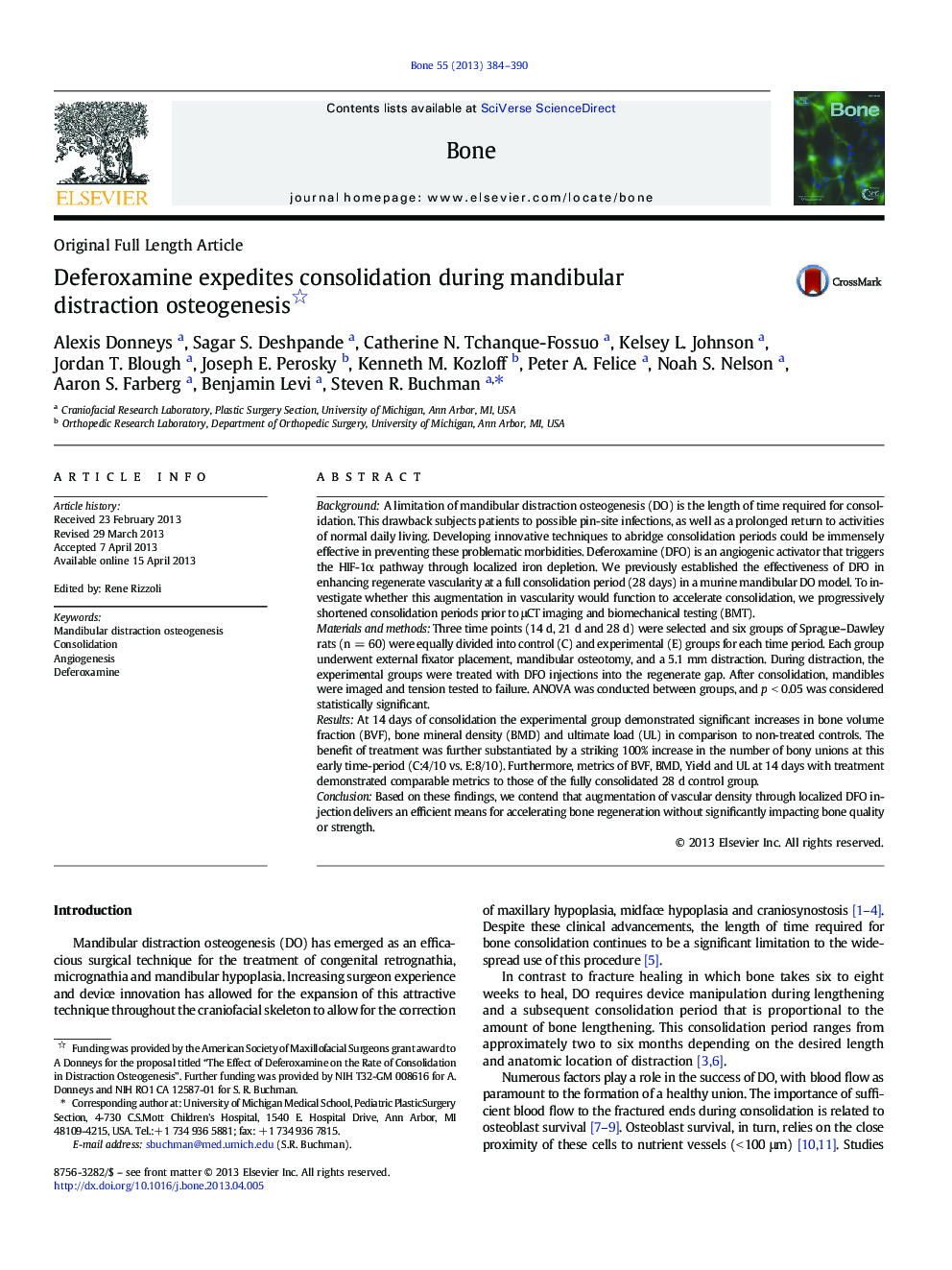| Article ID | Journal | Published Year | Pages | File Type |
|---|---|---|---|---|
| 2779229 | Bone | 2013 | 7 Pages |
•We examine accelerated consolidation in a murine model of mandibular distraction osteogenesis at abridged time-points.•We report quantifiable radiomorphometrics of bone quality and metrics of biomechanical strength.•We demonstrate the degree of acceleration of consolidation during distraction, with the utility of angiogenic deferoxamine therapy.
BackgroundA limitation of mandibular distraction osteogenesis (DO) is the length of time required for consolidation. This drawback subjects patients to possible pin-site infections, as well as a prolonged return to activities of normal daily living. Developing innovative techniques to abridge consolidation periods could be immensely effective in preventing these problematic morbidities. Deferoxamine (DFO) is an angiogenic activator that triggers the HIF-1α pathway through localized iron depletion. We previously established the effectiveness of DFO in enhancing regenerate vascularity at a full consolidation period (28 days) in a murine mandibular DO model. To investigate whether this augmentation in vascularity would function to accelerate consolidation, we progressively shortened consolidation periods prior to μCT imaging and biomechanical testing (BMT).Materials and methodsThree time points (14 d, 21 d and 28 d) were selected and six groups of Sprague–Dawley rats (n = 60) were equally divided into control (C) and experimental (E) groups for each time period. Each group underwent external fixator placement, mandibular osteotomy, and a 5.1 mm distraction. During distraction, the experimental groups were treated with DFO injections into the regenerate gap. After consolidation, mandibles were imaged and tension tested to failure. ANOVA was conducted between groups, and p < 0.05 was considered statistically significant.ResultsAt 14 days of consolidation the experimental group demonstrated significant increases in bone volume fraction (BVF), bone mineral density (BMD) and ultimate load (UL) in comparison to non-treated controls. The benefit of treatment was further substantiated by a striking 100% increase in the number of bony unions at this early time-period (C:4/10 vs. E:8/10). Furthermore, metrics of BVF, BMD, Yield and UL at 14 days with treatment demonstrated comparable metrics to those of the fully consolidated 28 d control group.ConclusionBased on these findings, we contend that augmentation of vascular density through localized DFO injection delivers an efficient means for accelerating bone regeneration without significantly impacting bone quality or strength.
